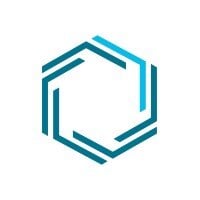The hotel industry is facing unprecedented challenges, from changing travel patterns to uncertain demand for hotel room nights. Combined with inflation-driven operating costs, higher interest rates, and deferred capex, many hotel properties are now facing significant financial stress. However, the outcome for distressed assets can vary widely, depending on the strategies and tactics employed by owners, operators, investors, and lenders. In today's environment, operational efficiencies, increased productivity, and technology are becoming essential components of success for smart hoteliers. Here are some tactics and strategies that are working in today's hotel business environment.
- Focus on operational efficiencies: One of the most effective ways to reduce costs and improve profitability is by focusing on operational efficiencies. This includes everything from automating routine tasks to implementing more efficient supply chain and inventory management processes. By reducing waste, optimizing labor costs, and improving overall efficiency, hoteliers can boost profitability and weather challenging economic conditions.
- Embrace technology: Technology is rapidly transforming the hospitality industry, and smart hoteliers are embracing new solutions to drive efficiency and profitability. For example, cloud-based property management systems (PMS), workforce and revenue management software can help automate tasks, optimize pricing and inventory, and improve overall operational efficiency. Similarly, smart room technology, such as connected thermostats and lighting systems, can help reduce energy consumption and costs while improving the guest experience.
- Leverage data analytics: In today's environment, data analytics can be a powerful tool for hoteliers looking to improve their operations. By analyzing customer data and other relevant information, hoteliers can identify trends, make better pricing and marketing decisions, and optimize their operations for improved profitability.
- Engage with customers: In an increasingly competitive market, building strong relationships with customers is critical to success. Smart hoteliers are leveraging social media, customer surveys, and other engagement tools to build relationships with their guests and gather valuable feedback to improve their operations.
- Invest in staff training: Finally, investing in staff training is another key strategy for success in today's hotel business environment. By providing employees with the skills and resources they need to succeed, hoteliers can boost productivity, improve customer service, and ultimately drive profitability.
Succeeding in today's hotel business environment requires a combination of smart strategies and tactics, including operational efficiencies, technology, data analytics, customer engagement, and staff training. By leveraging these tools and focusing on driving efficiency and profitability, hoteliers can weather challenging economic conditions and position themselves for long-term success in a rapidly evolving industry.






